Introduction
In the heart of China’s Sichuan Province lies Chengdu—a city that harmoniously balances history, culture, and modern life. Widely recognized as the home of the Giant Panda and a hotspot for Sichuan’s legendary cuisine, Chengdu offers an immersive journey into China’s diverse traditions and a serene lifestyle. Whether you’re wandering through ancient streets, sipping tea in a tranquil park, or hiking lush mountain trails, Chengdu invites visitors to experience its unique charm.
This comprehensive guide explores why Chengdu continues to attract travelers from across the globe, offering unforgettable experiences shaped by centuries of cultural evolution and culinary creativity.
Chengdu’s Rich Historical Legacy
Roots of an Ancient Civilization
Chengdu’s history spans more than 2,000 years, with its origins tracing back to the Shu Kingdom during the Three Kingdoms period. As one of China’s oldest continuously inhabited cities, Chengdu has long played a strategic and cultural role, both regionally and nationally.
Cultural Footprints of the Shu Kingdom
The city served as the capital of the Shu Kingdom, ruled by historical figures such as Liu Bei and the revered strategist Zhuge Liang. Their legacy is enshrined in Chinese literature, especially in the classic novel Romance of the Three Kingdoms. Landmarks like the Wuhou Shrine continue to commemorate their contributions.
The Archaeological Treasures of Jinsha
Discovered in the early 2000s, the Jinsha Site revealed a sophisticated civilization that predates many of China’s traditional dynasties. Artifacts such as golden masks and jade ornaments offer insights into the region’s ancient culture, underscoring Chengdu’s long-standing cultural importance.
A Close Encounter with Giant Pandas
Chengdu is globally recognized for its commitment to preserving one of the world’s most beloved animals—the Giant Panda. The city houses several renowned conservation and research centers.
Chengdu Research Base of Giant Panda Breeding
This internationally renowned center provides a sanctuary for over 150 pandas. Visitors can observe these gentle animals in habitats designed to mimic their natural environment. From active cubs to leisurely adult pandas, each enclosure offers a glimpse into their daily lives. The center also hosts red pandas, black swans, and informative conservation exhibits.
-
Tips for Visitors:
-
Visit early in the morning to see pandas at their most active.
-
Don’t miss the panda nursery.
-
Take time to explore the educational displays on conservation.
-
Dujiangyan Panda Valley
Located about an hour from Chengdu, this facility offers immersive programs, including volunteer experiences where visitors can prepare food, clean enclosures, and learn about panda care in a more natural environment.
Savoring the Flavors of Sichuan Cuisine
Chengdu is a paradise for food lovers. As the birthplace of Sichuan cuisine—one of China’s Eight Culinary Traditions—the city is known for bold, spicy flavors and the signature “mala” (numbing-spicy) taste derived from Sichuan peppercorns and chili.
Must-Try Dishes
-
Mapo Tofu:
-
A spicy, fragrant dish made with soft tofu, minced pork, and fermented bean paste.
-
Kung Pao Chicken:
-
Stir-fried chicken with peanuts, chilies, and a tangy sauce.
-
Hot Pot:
-
A communal dining experience where meats and vegetables are cooked in spicy broth.
-
Dandan Noodles:
-
Wheat noodles served with minced meat, chili oil, and pickled vegetables.
Where to Eat
-
Chen Mapo Tofu Restaurant:
-
The birthplace of the iconic dish.
-
Jinli Snack Street:
-
Ideal for sampling authentic street food and local snacks.
-
Yulin Food Market:
-
A popular spot for hot pot, beer, and local flair.
In 2010, Chengdu was designated a UNESCO City of Gastronomy, acknowledging its vital role in global culinary culture.
Must-See Attractions
Wuhou Shrine & Jinli Street
Wuhou Shrine pays tribute to Zhuge Liang and Liu Bei, central figures of the Three Kingdoms era. Nearby, Jinli Ancient Street recreates old Chengdu with traditional architecture, teahouses, craft stalls, and local street food.
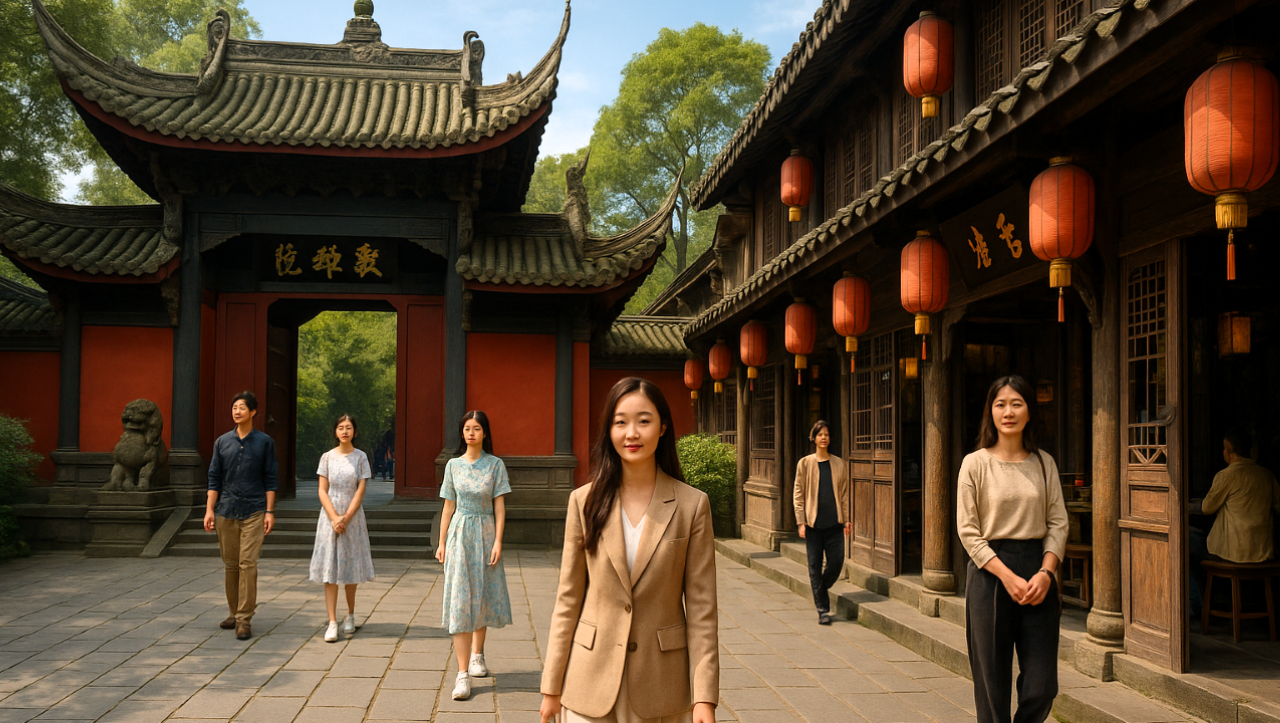
Qingcheng Mountain & Dujiangyan Irrigation System
These UNESCO-listed sites blend natural beauty with cultural heritage. Qingcheng Mountain, a Taoist haven, offers serene temples and mist-shrouded paths. Dujiangyan is a 2,000-year-old irrigation marvel still in use today, showcasing ancient engineering ingenuity.
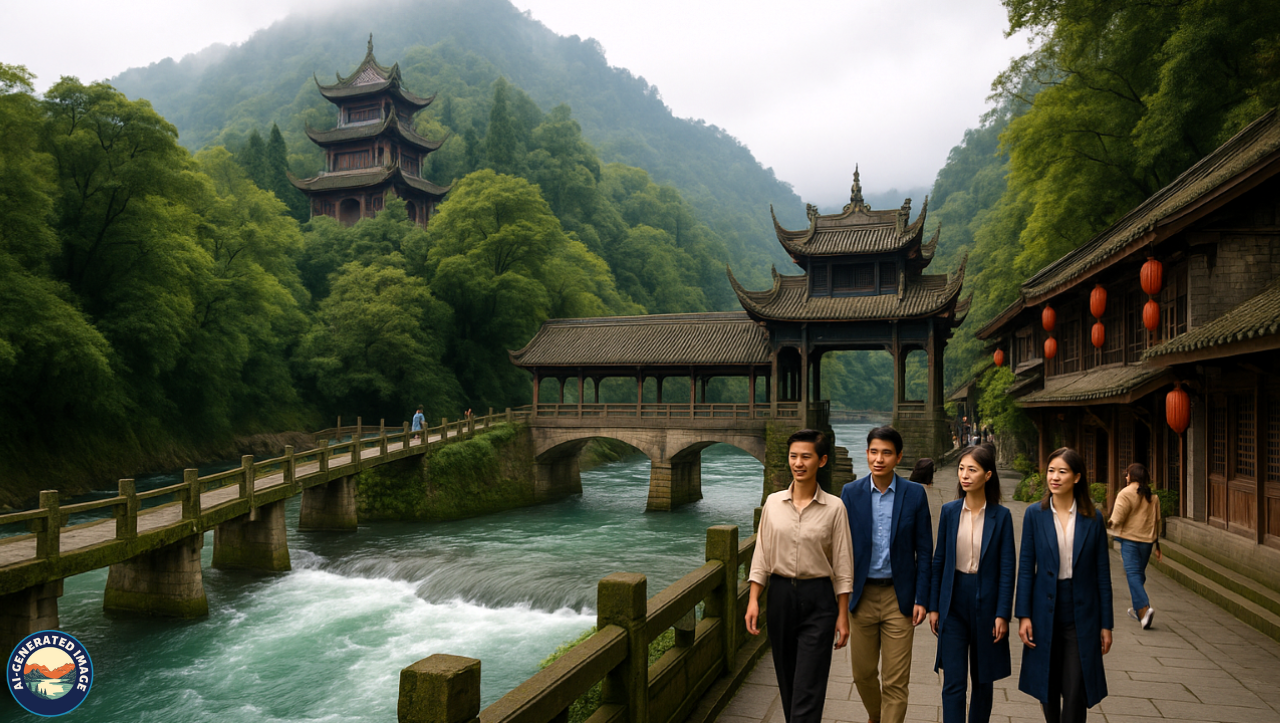
People’s Park
This vibrant city park captures Chengdu’s laid-back spirit. Locals gather to play mahjong, dance, or enjoy traditional tea in open-air pavilions. One quirky highlight is professional ear-cleaning—a practice unique to the region.
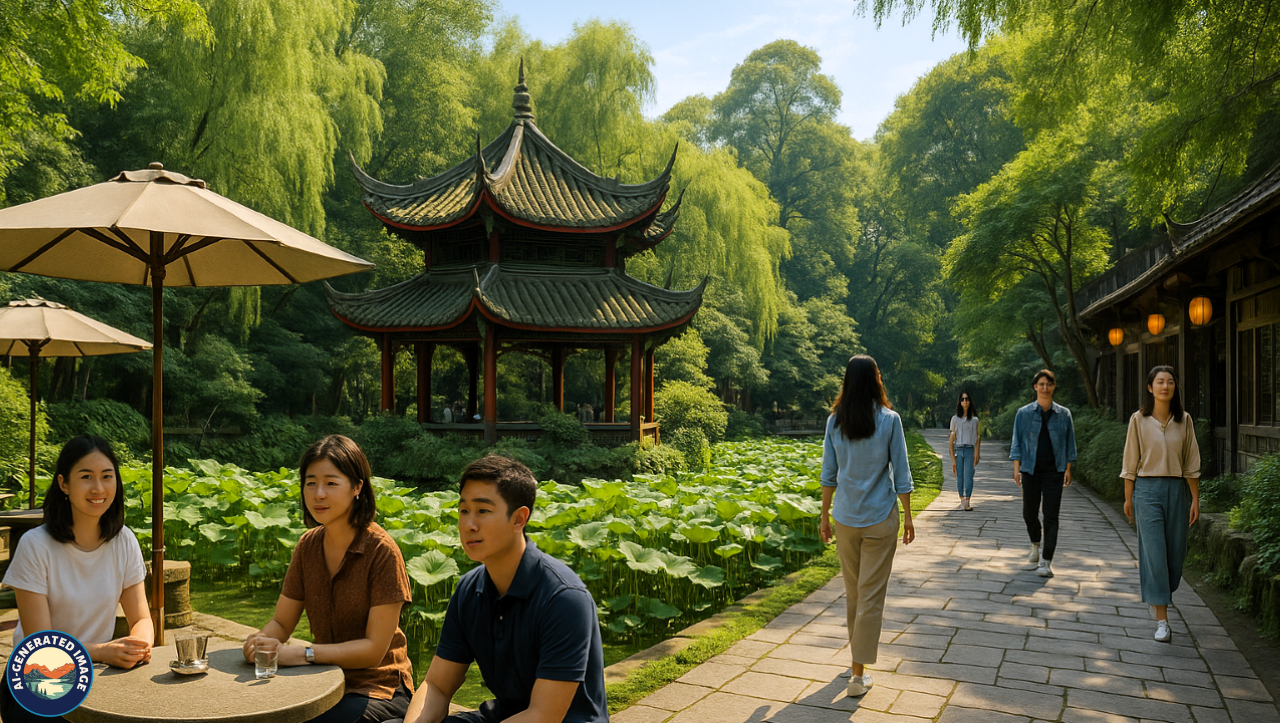
Wide & Narrow Alleys (Kuan-Zhai Xiangzi)
These restored alleys reflect Qing Dynasty architecture and modern Chengdu’s creative edge. Wide Alley features teahouses and galleries, while Narrow Alley is lined with shops and eateries, offering a perfect blend of history and lifestyle.
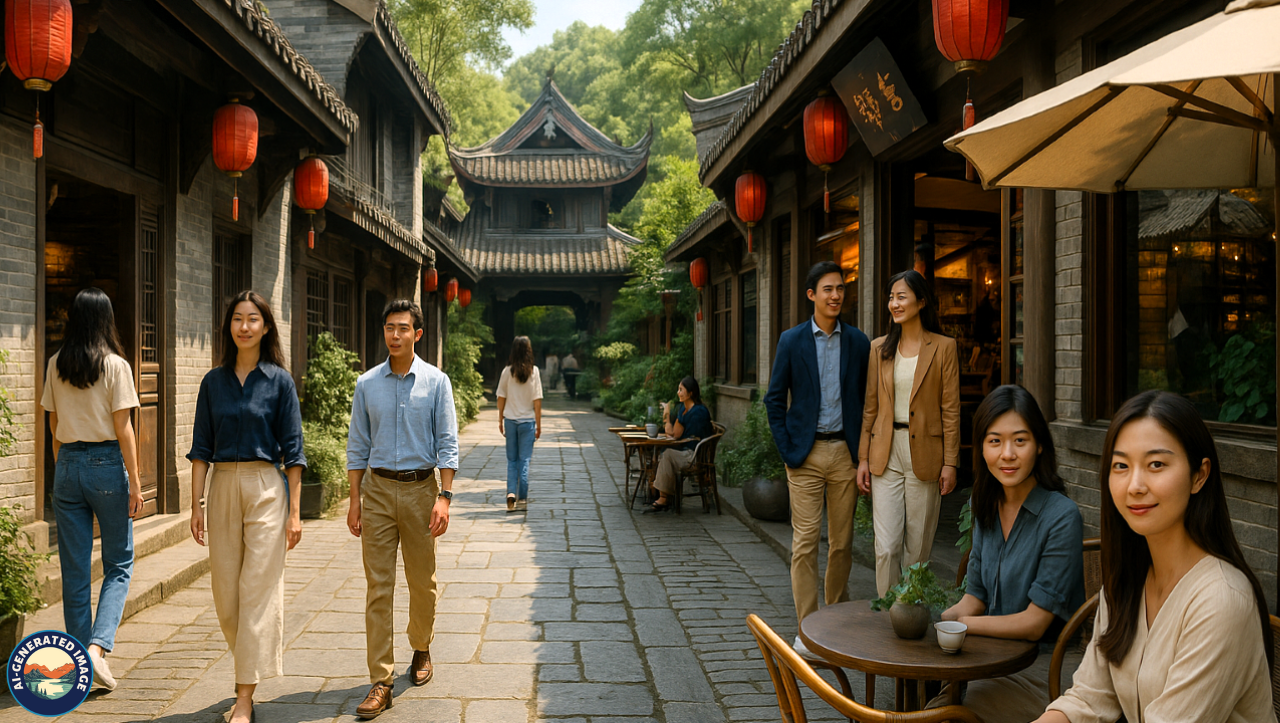
Sichuan Opera & Chengdu Museum
A visit to Chengdu isn’t complete without watching face-changing at a Sichuan Opera show—an ancient theatrical art where performers change masks instantly. The Chengdu Museum complements the cultural experience with exhibits on the city’s evolution from ancient times to the present.
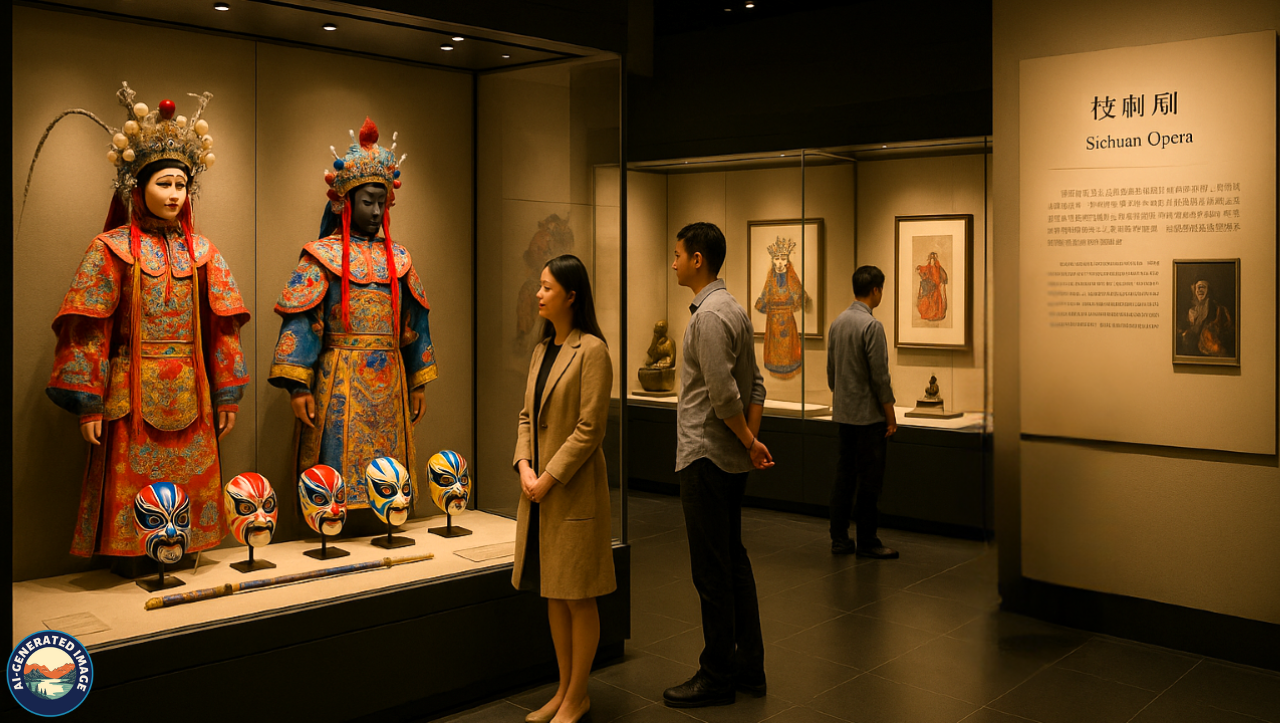
Beyond Pandas: Nature and Sacred Landmarks
Leshan Giant Buddha
Standing 71 meters tall, the Leshan Buddha is the world’s largest stone Buddha, carved into a cliff overlooking the confluence of three rivers. A short drive from Chengdu, it’s accessible by both foot and boat and is a must-see for first-time visitors.
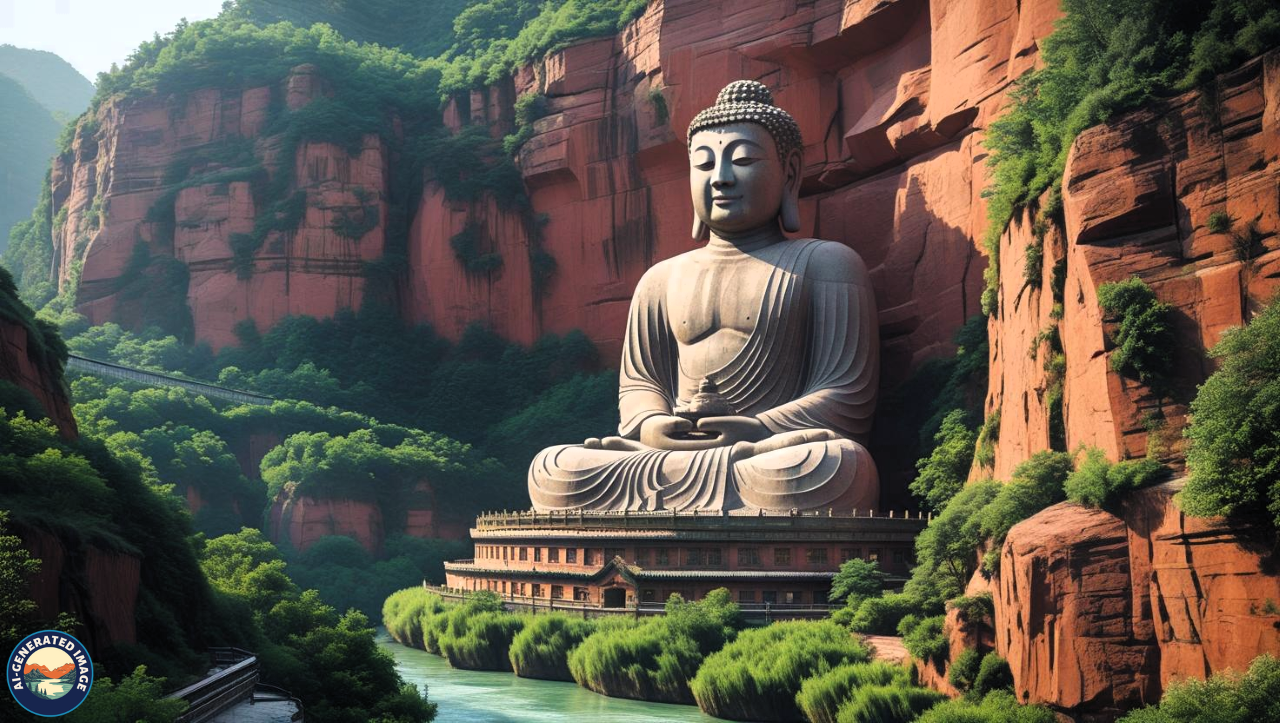
Mount Emei & Nearby Landscapes
Mount Emei, one of China’s four sacred Buddhist mountains, is ideal for hiking, temple visits, and breathtaking views. Surrounding countryside areas, such as tea plantations and bamboo groves, offer a tranquil contrast to city life.
The Modern Pulse of Chengdu
Innovation and Growth
Chengdu has evolved into a key center for technology, innovation, and design. The Tianfu New Area is a futuristic district focusing on green tech, smart city development, and global business hubs.
Tianfu International Airport
Opened in 2021, this modern airport significantly boosts Chengdu’s international accessibility. Designed with smart features and sustainability in mind, it symbolizes Chengdu’s ambition to be a major global city.
Art, Culture & Shopping
-
Eastern Suburb Memory:
-
A transformed industrial site now hosts art exhibitions, live music, and trendy cafes.
-
IFS & Taikoo Li:
-
Chengdu’s premier shopping destinations, combining luxury brands with local design aesthetics.
Travel Tips and Visitor Essentials
Language and Communication
While Mandarin is the primary language, many tourist areas provide English signage. Translation apps like Pleco or Google Translate are helpful tools for communication.
Transportation
Chengdu’s metro is efficient, clean, and affordable. Taxis and ride-hailing services like Didi are reliable, and cashless payments (WeChat Pay, Alipay) are commonly accepted, even by small vendors.
Best Time to Visit
-
Ideal Seasons:
-
Spring (March–May) and Autumn (September–November)
-
Avoid:
-
Summer (hot and humid) and major public holidays due to heavy crowds
Local Etiquette
-
Dress conservatively in religious or historical sites.
-
Speak softly in temples and sacred areas.
-
Always accept or give items using both hands as a sign of respect.
Suggested Travel Itineraries
2-Day Chengdu Itinerary
-
Day 1:
-
Panda Research Base → Wuhou Shrine → Jinli Street → Sichuan Opera
-
Day 2:
-
People’s Park → Wide & Narrow Alleys → Local hot pot dinner
5-Day Chengdu Getaway
-
Day 1–2:
-
Explore Chengdu’s cultural and culinary highlights
-
Day 3:
-
Visit Dujiangyan and hike Qingcheng Mountain
-
Day 4:
-
Day trip to Leshan Giant Buddha
-
Day 5:
-
Relax in modern Chengdu or visit art hubs
Conclusion
Chengdu captivates the heart with its rich history, compelling traditions, and flavors that awaken the senses. Whether you’re gazing at a Giant Panda, strolling through ancient alleys, or savoring a bowl of spicy noodles, every experience in Chengdu tells a story. The city moves at a relaxed pace, inviting visitors to pause, observe, and appreciate life’s simple joys.
Chengdu isn’t just a destination—it’s an invitation to explore the essence of Chinese culture through a modern yet timeless lens.
FAQs
Q1. What is Chengdu famous for?
Chengdu is best known for being the home of Giant Pandas, its bold and spicy cuisine, rich historical heritage, and its relaxed way of life.
Q2. Is Chengdu safe for tourists?
Yes, Chengdu is one of the safest cities in China, with a low crime rate and friendly locals.
Q3. How can I get around Chengdu?
The metro system is the most efficient mode of transport. Taxis and rideshare services are also convenient and affordable.
Q4. Can I see pandas any time of year?
Yes, panda research centers operate year-round. Morning visits are recommended for more active sightings.
Q5. Do locals speak English?
English is limited, but younger residents and service staff in tourist areas may speak basic English. A translation app is helpful.
Q6. What’s the best season to visit?
Spring and autumn offer the most comfortable weather for sightseeing.
Q7. Are there vegetarian food options?
Yes, many restaurants offer vegetarian dishes, especially at Buddhist or health-focused eateries.

